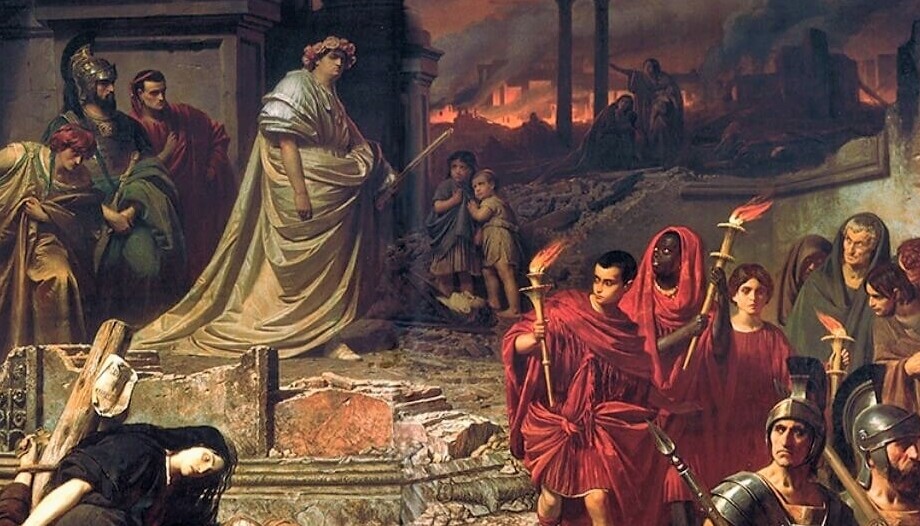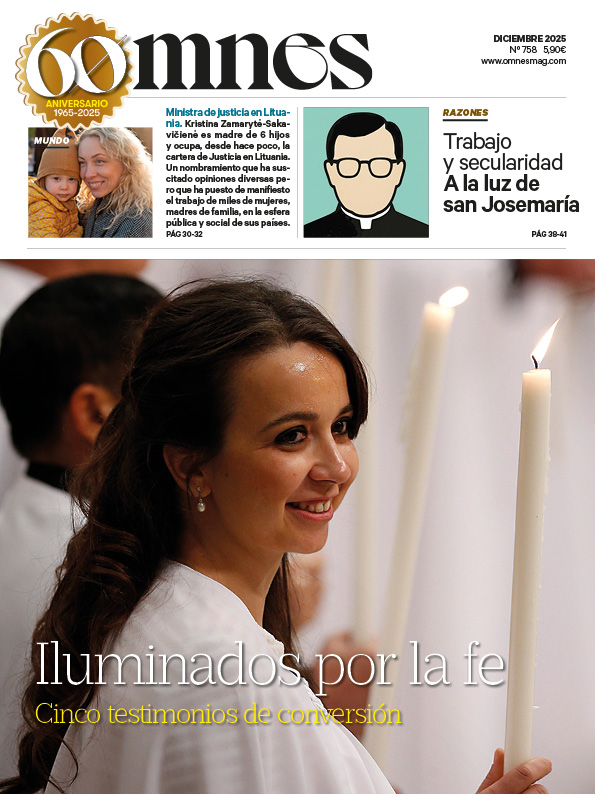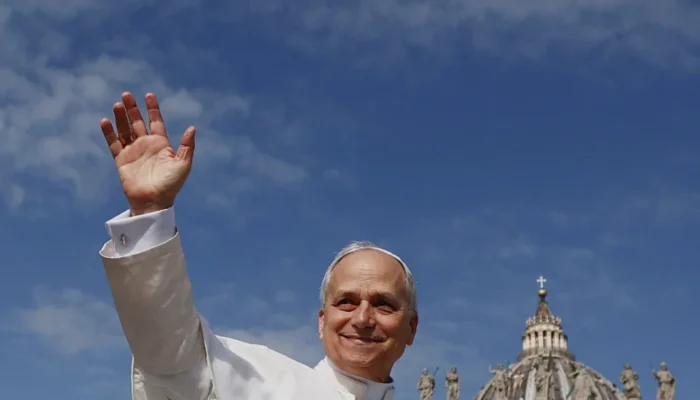Each of the Roman persecutions against Christians was different from others. Long before the advent of Christianity, the Roman state authorities realized the danger of the invasion of exotic divinities. The remedy was to prohibit the introduction of new cults, including private ones.
Thousands were accused, executed or sentenced to life imprisonment. As for the number, some speak of ten persecutions. But this is a symbolic number related to the Apocalypse. Moreover, they were mixed with times of peace.
Measures against the new cults were various, but the best known is the Senatus Consultum de Bacchanalibus (186 BC). Reports of ritual murders, poisonings and inheritances by a secret society involved more than seven thousand accused, executed or sentenced to life imprisonment. The cause was always to prevent the corruption of good customs and the disturbance of public order.
The imperial cult, closely linked to persecution
The imperial cult will be closely linked to the persecution. Augustus, who had given this cult its official form, allowed the veneration of his genius (a kind of divine double) as a sign of loyalty. During the first century the line of Augustus was maintained, except for tyrannical excesses, such as Domitian who claimed the title of Dominus.
The deceased princes suffer apotheosis, through a decree of the Senate, which excludes the tyrants condemning their memory, as in the case of Nero. In the second century, the apotheosis in the life of the emperors and the family becomes automatic, for example with Antoninus Pius and Faustina.
During the third century the worship of the emperor is added and with Aurelian (270-275). He identifies himself (Dominus et Deus) with the Sun god and is represented with the radiata diadem and the mantle of golden buckles. Diocletian, at the gates of the fourth century, is considered the adopted son of Jupiter and his colleague Maximian of Hercules, beginning a double line of Jovian and Herculian emperors.
Background
For the nascent Church, the antecedents of the persecution are the revolt against the Christians of Jerusalem in the years 32-34, who had to flee to Antioch and other places. And during the empire of Claudius, around the year 49, the expulsion of the Jews from Rome, and along with them also the Christians. None of these moments is still organized persecution, because they are sporadic events. It is necessary to wait until the year 64 in which Nero, after the fire of Rome, makes persecute the Christians with the accusation of having been the cause.
The accusation of causing the fire in Rome
According to some historians, this accusation came from the Roman people. But we have a text by Tacitus († 120 A.D.) in which it is affirmed that Nero, in order to put an end to the rumors, presented as guilty those whom the vulgar called Christians. He began by arresting those who openly confessed their faith, and then, by denunciations, a huge crowd. And they were convicted on the charge of hatred of mankind.
Nero had offered his gardens for a spectacle in which Christians, covered with the skins of wild beasts, were torn to pieces by dogs. Or nailed to crosses, at nightfall, they were burned so as to serve as illumination during the night.
Torture of Christians at the Vatican
The emperor himself was involved mixed with the plebs, in the garb of a charioteer or riding in a chariot. For this reason, says Tacitus, "even if they were guilty and deserved the maximum punishments, they provoked compassion, at the idea that they perished not for the public good, but to satisfy the cruelty of one alone".
The fire that burned almost all of Rome started in the Circus Maximus, which was completely destroyed. This explains why the torture of Christians was carried out in the Vatican, since at that time there was no other suitable place to carry it out.
High-profile and common characters
Some give the number of ten persecutions, but it is known, this is a symbolic number related to the Apocalypse.
The certain thing is that in the persecutions they are going to die important personages as also common people: under Nero (year 64), Peter and Paul; with Domitian (90), John; under Trajan (98-117), Ignatius of Antioch; with Marcus Aurelius (161-180), Justin; under Commodus (180), the Scillitan martyrs. Under Septimius Severus (193-211), Perpetua and Felicity; under Maximian Thracian (235-238), Pontianus pope; under Decius (249-251) they are very numerous; under Valerian (253-260), Lawrence and Cyprian.
Finally, with Diocletian (248-305), we will have four successive edicts, which will provoke countless victims. Each of the persecutions has its own motivations and characteristics.
Origin and motivations
Tertullian speaks of the origin of the persecutions by Nero. His statement is controversial and divides scholars between those who oppose it and those who defend the existence of a general law of persecution against Christianity. Perhaps, the only way to explain that there have been persecutions with local and occasional character, as happened in Lyon, is the existence of coercitio, or intervention by force. A force decreed by the proconsuls, to try to calm the public opinion that had entered into effervescence.
This view is balanced, as it combines three possible factors. There have been accusations of crimes punishable by common law, interventions by the forces of public order and the survival of ancient decrees of Nero and Domitian. Be that as it may, Tertullian affirms that fame, rumors, ran among the people of the street with alarming news about the private behavior of Christians.
Main accusations: sacrilege and lèse-majesté
The causes and accusations of the people against Christians are sacrilege and lèse majesté. In reality it is all disorder and revolt against authority. Any word against the Felicitas temporum which the imperial inscriptions, medals and coins proclaim, and of which they are proud. Participation in illicit meetings in which the public tranquility is agitated.
But they are more an excuse that does not explain the ferocity of some persecutions, in which Christians were tortured with whips, wild beasts, the iron chair, where the bodies were roasted....
Triple accusation and slander: incest, ritual infanticide and cannibalism
The accusations against the Christians originally came from the vulgar and were articulated in a triple denunciation: incest, ritual infanticide and cannibalism. There is evidence that the three were not united at the beginning of the persecutions, but were born separately and coincided in the same accusation from the polemic work of Fronton against the Christians (162-166).
According to Meliton of Sardis, the accusations had already begun with Claudius and Nero, that is to say, from the earliest times. With total certainty there have been calumnies, in the times of Pliny, with the accusation of cannibalism.
The cause of this type of accusations was the voices heard about the Eucharistic banquet and the communion of the body and blood of Christ. To this was added the reserved character of the cult: the more one tried to conceal it, the more suspicions were generated once the word was spread.
Envy, grudges, imaginations...
The accusation of incest was probably due to the appellative of brothers with which the first Christians were called. As for the authors of these calumnies, it cannot be ruled out that, once the first voice was spread, envy or resentment made the members of some mystical sects participate in the accusations.
In different authors of Christian antiquity we find a description - imagined, of course - of a Christian ceremony: a hungry dog, which is tied to a heavy candelabra, is thrown some leftover food; the dog rushes after them throwing the candelabra to the ground and consequently turning off the light, at which point incest takes place among all those present.
Each pursuit was different
Two facts should be emphasized: one is that each persecution is different from the others and we cannot judge them all in the same way; the other is that there has not been continuous persecution, but mixed with times of peace.
And the news came from pagan and Christian material: Tacitus, Pliny, Trajan, the Apologies, the Acts of the martyrs (which were the object of public and liturgical reading), the writings of some historians. Martyrdom was immediately seen from their perspective of the highest imitation of Jesus Christ.
Violence and religious fact

Pontifical University of Santa Croce, 'The Roman persecutions', in AA.VV, "Violence and religious fact"edited by José Carlos Martín de la Hoz (Rialp, 2025).







